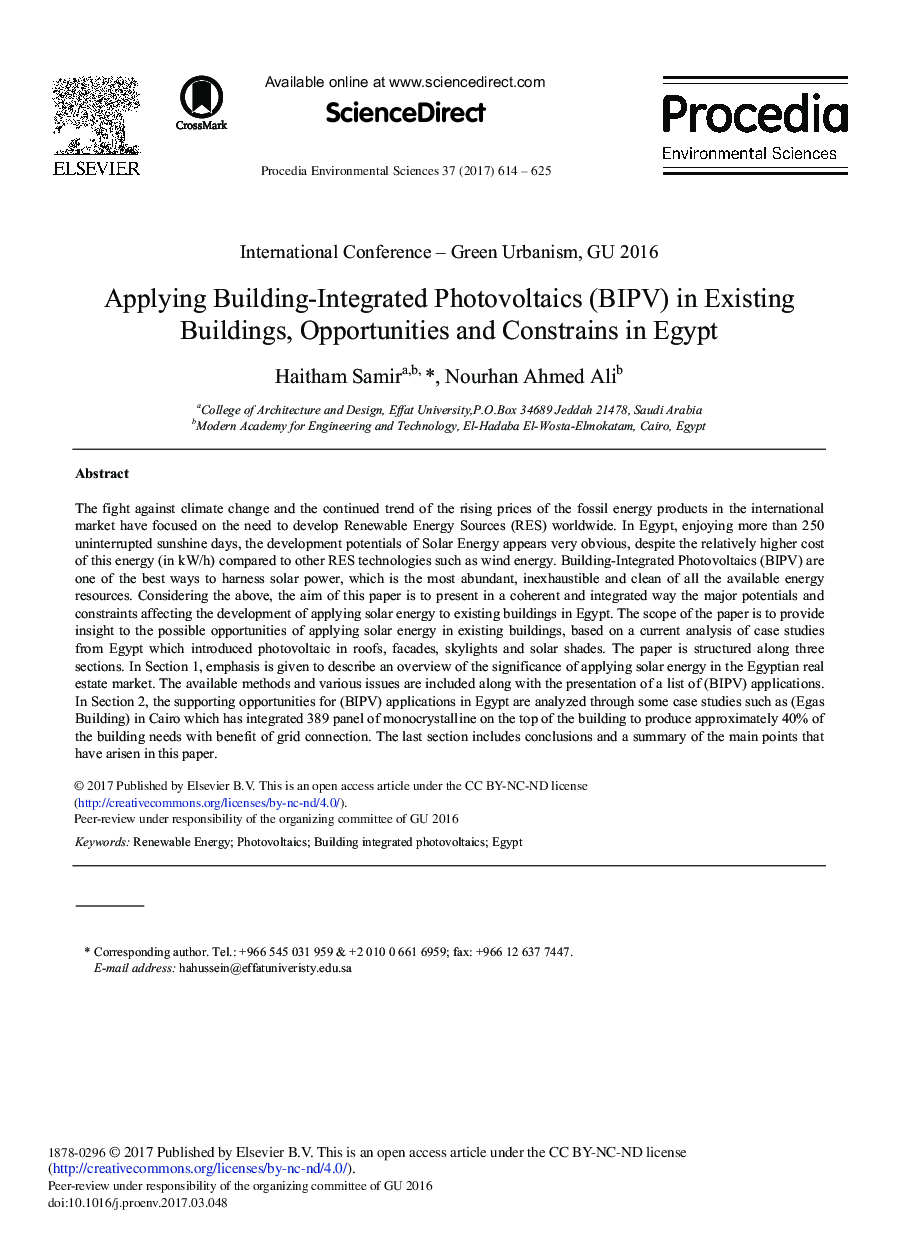| کد مقاله | کد نشریه | سال انتشار | مقاله انگلیسی | نسخه تمام متن |
|---|---|---|---|---|
| 5745165 | 1618607 | 2017 | 12 صفحه PDF | دانلود رایگان |

The fight against climate change and the continued trend of the rising prices of the fossil energy products in the international market have focused on the need to develop Renewable Energy Sources (RES) worldwide. In Egypt, enjoying more than 250 uninterrupted sunshine days, the development potentials of Solar Energy appears very obvious, despite the relatively higher cost of this energy (in kW/h) compared to other RES technologies such as wind energy. Building-Integrated Photovoltaics (BIPV) are one of the best ways to harness solar power, which is the most abundant, inexhaustible and clean of all the available energy resources. Considering the above, the aim of this paper is to present in a coherent and integrated way the major potentials and constraints affecting the development of applying solar energy to existing buildings in Egypt. The scope of the paper is to provide insight to the possible opportunities of applying solar energy in existing buildings, based on a current analysis of case studies from Egypt which introduced photovoltaic in roofs, facades, skylights and solar shades. The paper is structured along three sections. In Section 1, emphasis is given to describe an overview of the significance of applying solar energy in the Egyptian real estate market. The available methods and various issues are included along with the presentation of a list of (BIPV) applications. In Section 2, the supporting opportunities for (BIPV) applications in Egypt are analyzed through some case studies such as (Egas Building) in Cairo which has integrated 389 panel of monocrystalline on the top of the building to produce approximately 40% of the building needs with benefit of grid connection. The last section includes conclusions and a summary of the main points that have arisen in thispaper.
Journal: Procedia Environmental Sciences - Volume 37, 2017, Pages 614-625